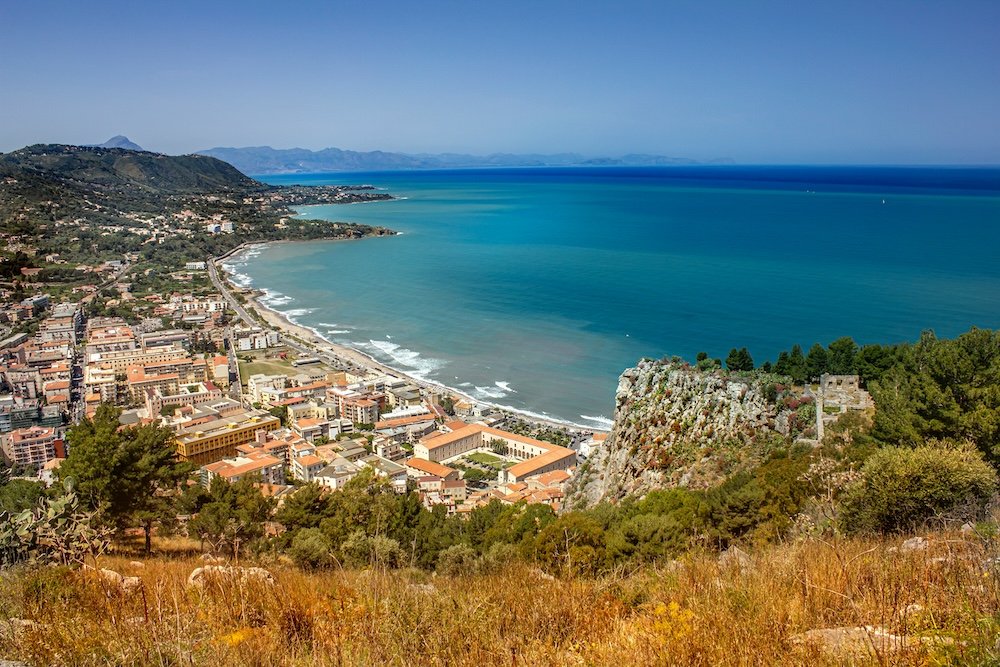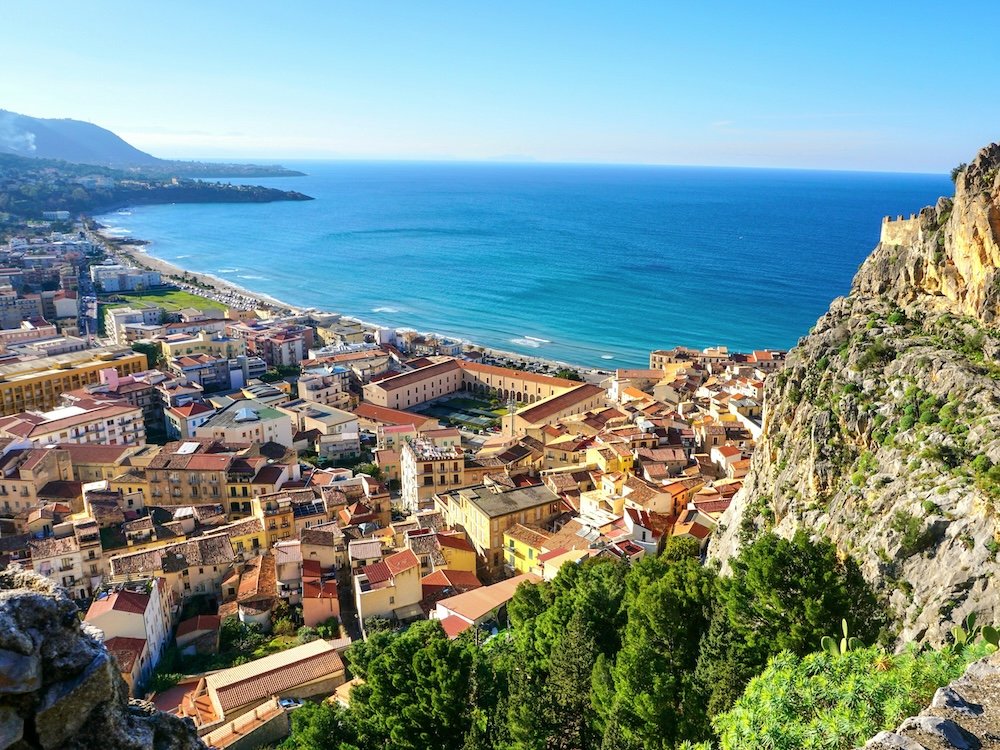
Want to discover the most beautiful Italian Islands you must visit?
The Italian islands offer a mesmerizing blend of history, culture, and natural splendor that beckons travelers from around the globe.
From the volcanic landscapes of Sicily and the pristine beaches of Sardinia to the glamorous allure of Capri and the untouched rustic charm of smaller isles like Ponza and Procida, each island presents a distinct experience that captivates and delights.
The allure of the Italian islands is not just in their varied landscapes and historical sites, but also in their ability to offer unique experiences that range from luxurious relaxation to adventurous explorations.
Whether you’re a history enthusiast eager to tread paths lined with ancient ruins, a nature lover looking to embrace the rugged coastline and clear waters, or a culinary aficionado eager to taste the local seafood specialties, the Italian islands provide a rich tapestry of experiences.
The importance of exploring these islands extends beyond mere travel; it’s about discovering the rich tapestry of Italian culture and the diverse natural beauty that each island preserves.
As you plan your journey across these enchanting isles, prepare to uncover the essence of Italy in its most isolated yet inviting forms.
Now, let’s take a closer look at the 10 most beautiful Italian Islands:
1. Sicily
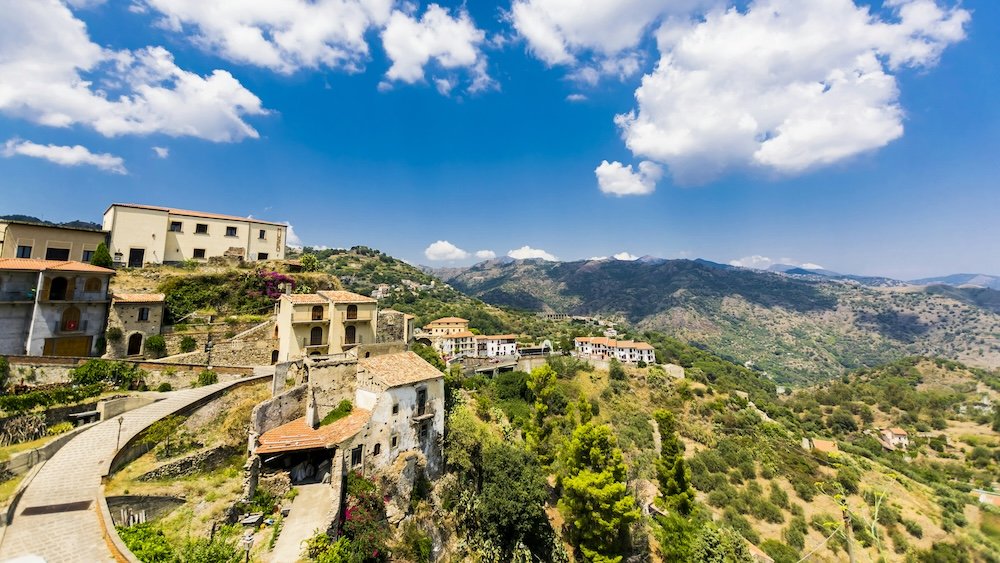
Sicily, the largest of the Italian islands, is a cultural crossroads where ancient history and modern life blend seamlessly against a backdrop of dramatic landscapes.
The island’s history is a complex tapestry woven through centuries of conquests and cultures, including Greek, Roman, Arab, Norman, and Spanish influences, all leaving their indelible marks on its architecture, language, and traditions.
The vibrant culture of Sicily is palpable in its bustling markets, traditional festivals, and the warm hospitality of its people.
Sicilian cuisine, a highlight for many visitors, offers a delectable array of dishes that reflect the island’s multicultural heritage.
Must-Visit Attractions in Sicily
- Mount Etna: Dominating the landscape of eastern Sicily, Mount Etna is Europe’s highest and most active volcano. This majestic natural wonder is not only a site for scientific study but also a popular destination for hiking and touring the rich, fertile landscapes that its lava has helped to create over millennia.
- Valley of the Temples: Near the southern coast in Agrigento, this UNESCO World Heritage Site is one of the most significant examples of Greater Greece art and architecture. The Valley of the Temples is a stunning collection of Doric temples from the ancient city of Akragas, standing as a testament to Sicily’s Greek past.
- Palermo and Catania: Sicily’s two largest cities are bustling hubs of culture and history. Palermo, the island’s capital, boasts stunning examples of Norman architecture such as the Palermo Cathedral and the Palazzo dei Normanni. Catania, under the shadow of Mount Etna, offers visitors a blend of rich baroque architecture and vibrant street life. Both cities are gateways to understanding the diverse cultural influences that have shaped Sicily.
Exploring Sicily provides a profound insight into the resilience and richness of the Italian islands, where every corner reveals layers of history waiting to be discovered.
Whether you are wandering through ancient ruins, sampling the exquisite local cuisine, or simply soaking in the Mediterranean sun, Sicily offers an array of experiences that encapsulate the spirit of Italy.
2. Sardinia
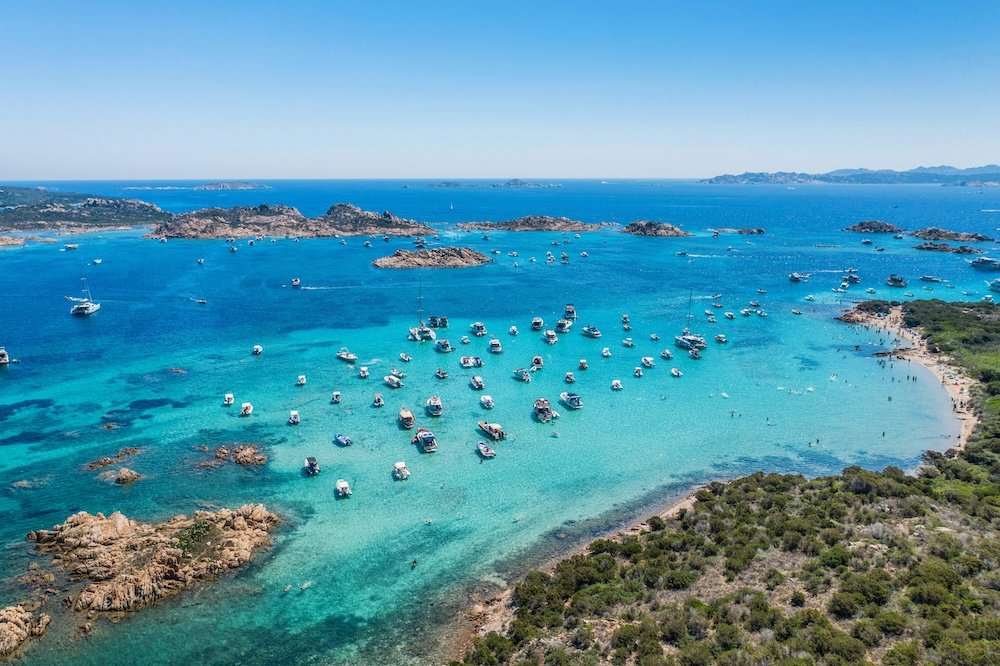
Sardinia, the second-largest of the Italian islands, is a jewel in the Mediterranean known for its crystal-clear waters and white sandy beaches, as well as its rich history that dates back thousands of years.
This island offers a less commercialized taste of Italy, with vast landscapes ranging from rugged mountains and dense forests to serene coastlines, each offering breathtaking views and unique experiences.
The island’s coastline is a paradise for beach lovers, with the Costa Smeralda, or Emerald Coast, standing out as a particularly enchanting destination.
Known for its celebrity visitors and luxury resorts, the Costa Smeralda boasts some of the most picturesque beaches in the Mediterranean, such as Spiaggia del Principe and Liscia Ruja, where azure waters meet powdery white sands.
Ancient Archaeological Sites
Sardinia is also famous for its mysterious Nuragic complexes, ancient megalithic edifices built between 1900 and 730 BCE.
These structures are unique to the island and offer a fascinating glimpse into the lives of its early inhabitants.
The most notable of these is Su Nuraxi in Barumini, a UNESCO World Heritage site that provides an exceptional insight into prehistoric building techniques and social structures.
Highlighting Sardinia’s Rich Heritage
Beyond its stunning beaches and ancient sites, Sardinia’s interior is dotted with traditional villages where time seems to stand still.
Here, visitors can immerse themselves in the authentic Sardinian culture, sampling traditional foods like pecorino cheese and the hearty pane carasau, and engaging with local traditions that have been preserved over centuries.
Sardinia encapsulates the essence of the Italian islands—a blend of natural beauty, historical depth, and cultural richness that makes it a must-visit destination for anyone seeking to explore Italy beyond the mainland.
Whether you’re diving into the crystal-clear waters of the Tyrrhenian Sea, exploring ancient ruins, or simply enjoying the slow pace of island life, Sardinia offers an unforgettable escape into the heart of the Mediterranean.
3. Capri
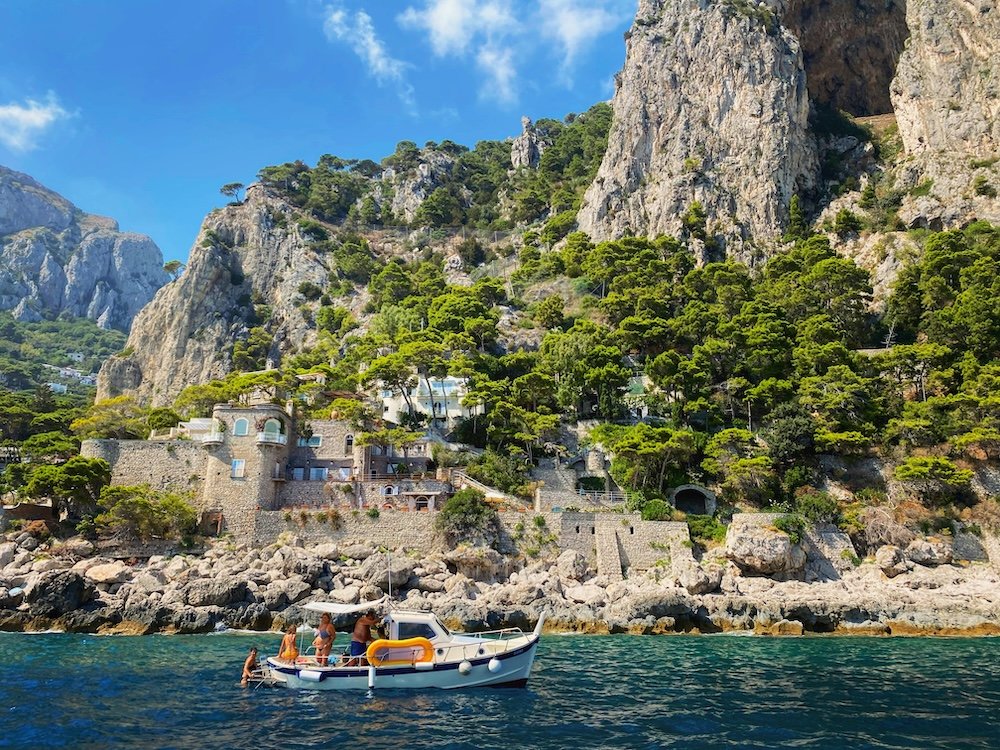
Capri, an enchanting gem among the Italian islands, is renowned worldwide for its breathtaking landscapes, upscale resorts, and the iconic Blue Grotto.
This small island off the coast of Naples embodies the epitome of Mediterranean charm and sophistication, attracting visitors with its blend of natural beauty and stylish living.
The Blue Grotto: A Natural Marvel
The Blue Grotto (Grotta Azzurra) is Capri’s most famous attraction, a sea cave that is illuminated with a mesmerizing blue light, which creates a magical atmosphere that seems almost surreal.
Accessible by boat, the experience of entering the cave is as thrilling as the visual spectacle inside.
The light, which comes from an underwater opening, reflects off the water to bathe the cave in an ethereal glow, making it a must-visit for anyone traveling to Capri.
Luxe and Picturesque Towns
Capri is also known for its luxe, picturesque towns of Capri and Anacapri.
These towns are perched atop rugged cliffs and offer stunning views of the sea.
The towns are filled with narrow, winding streets, hidden courtyards, and vibrant squares that exude the relaxed yet sophisticated lifestyle that has made Capri a hotspot for artists, writers, and celebrities over the decades.
Chic Boutiques and Cafes
Shopping in Capri is a delight, with chic boutiques lining the streets, offering everything from high-end fashion and handcrafted jewelry to bespoke perfumes and artisanal crafts.
These boutiques not only provide a chance to shop for unique items but also reflect the island’s stylish character.
Equally enticing are Capri’s cafes, where one can indulge in the local culinary delights while enjoying a cup of Italian coffee.
These cafes often boast terraces with panoramic views, making them perfect spots to relax and soak in the island’s vibrant atmosphere.
Whether it’s savoring a slice of torta caprese, a local chocolate and almond cake, or enjoying a glass of limoncello, Capri offers culinary experiences that are as refined as they are delicious.
Capri represents the luxurious and artistic spirit of the Italian islands, making it an essential destination for those seeking beauty and elegance in one of Italy’s most famed locales.
4. Elba
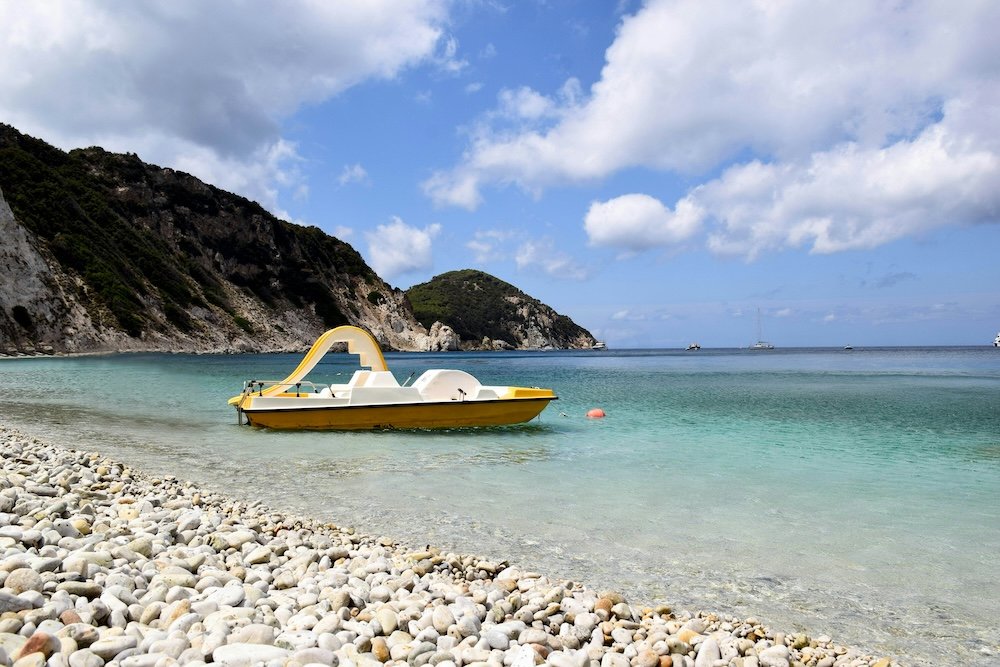
Elba, another treasure among the Italian islands, is steeped in history and natural beauty.
It is perhaps best known as the island of Napoleon’s exile in 1814, a significant chapter in European history.
Today, Elba offers a combination of historical intrigue and stunning natural landscapes, making it a fascinating destination for both history buffs and nature lovers.
Napoleon’s Historical Legacy
During his brief exile on Elba, Napoleon left a lasting mark, which continues to be a draw for visitors.
The Palazzina dei Mulini in Portoferraio, Napoleon’s primary residence during his stay, has been preserved as a museum.
Here, visitors can explore the rooms where Napoleon lived and worked, gaining insights into his daily life and the period of his exile.
This historical connection adds a unique dimension to a visit to Elba, blending the allure of history with the beauty of the Mediterranean.
Natural Beauty and Outdoor Activities
Beyond its historical significance, Elba is renowned for its spectacular natural landscapes.
The island boasts more than 150 beaches, ranging from sandy stretches like Spiaggia di Sansone to secluded coves accessible only by boat or hiking trails.
Elba’s clear waters make it an ideal spot for snorkeling and diving, offering a chance to explore vibrant marine life and underwater wrecks.
Elba is also a haven for hikers and outdoor enthusiasts.
The island’s diverse terrain includes forested hills and rugged cliffs, providing ample opportunities for hiking and mountain biking.
The Grande Traversata Elbana (GTE), a trail that spans much of the island, offers breathtaking views and a challenging adventure for serious hikers.
Embracing the Island Lifestyle
Visiting Elba also means embracing the laid-back island lifestyle.
The local cuisine, characterized by fresh seafood and Italian classics, can be enjoyed in the many restaurants and taverns that dot the coastline.
Evenings on Elba are best spent watching the sunset from one of its picturesque beaches or participating in the lively local nightlife.
Elba encapsulates the essence of the Italian islands—rich in history, surrounded by natural beauty, and filled with opportunities for adventure and relaxation.
It’s a place where the past and present merge seamlessly, creating an unforgettable island experience.
5. Ischia
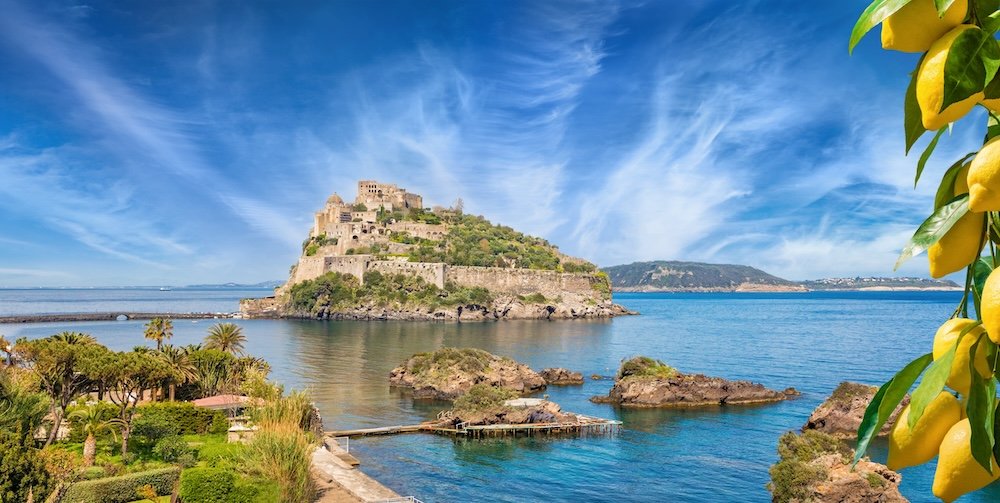
Ischia, located in the Bay of Naples, is celebrated for its thermal spas, lush gardens, and rich history, making it a standout destination among the Italian islands.
The island’s volcanic origin is the source of its famous thermal waters, which have been attracting visitors since Roman times.
Renowned Thermal Spas
Ischia is dotted with numerous thermal spas that harness the naturally hot, mineral-rich waters bubbling up from underground.
These spas offer a variety of treatments that are not only relaxing but also believed to have healing properties.
The most famous of these is the Poseidon Gardens, which features several thermal pools with varying temperatures, set amidst a scenic garden overlooking the sea.
Spending a day here is a perfect way to unwind and experience the therapeutic benefits of Ischia’s thermal waters.
Lush Gardens and Scenic Beauty
The island is also known for its lush, verdant gardens, such as La Mortella.
This garden was designed by British composer William Walton, who lived on the island, and his wife, Susana.
La Mortella is divided into valley and hill gardens, featuring a range of exotic and Mediterranean plants, along with beautiful views, ponds, and streams that create a tranquil and enchanting atmosphere.
Aragonese Castle and Beaches
A visit to Ischia would be incomplete without exploring the iconic Aragonese Castle.
This historic fortress stands on a rocky islet connected to the main island by a causeway.
Originally built by the Greeks in 474 BC, the castle has been modified and expanded over the centuries and offers a glimpse into the island’s past, with magnificent panoramic views of Ischia and the surrounding sea.
Ischia’s beaches are equally inviting, with soft sands and clear waters that make them perfect for relaxing after a day of sightseeing.
Maronti Beach is one of the largest and most popular, known for its natural thermal springs and the charming restaurants that line the shore.
Embracing Ischia’s Charm
Whether you are soaking in a thermal spa, wandering through lush gardens, exploring historical sites, or lounging on the beach, Ischia offers a diverse range of activities that capture the essence of the Italian islands.
This island not only provides relaxation and wellness through its natural features but also enchants visitors with its beauty and history.
6. Lipari (Aeolian Islands)
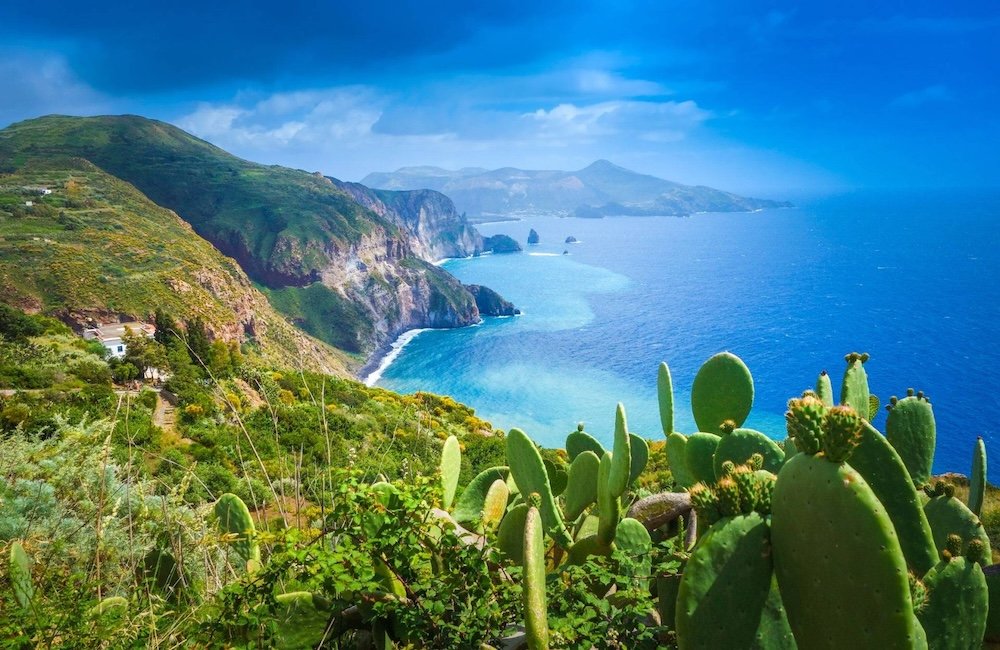
Lipari, the largest of the Aeolian Islands, showcases the dynamic and dramatic natural beauty typical of this volcanic archipelago.
Situated to the north of Sicily, these islands are born from volcanic activity, which not only shaped their rugged landscapes but also their rich soils and the deep blue waters that surround them.
Volcanic Origins of the Aeolian Islands
The Aeolian Islands owe their existence to volcanic activity, with ongoing eruptions from Stromboli and occasional activity on other islands like Vulcano, keeping this origin story alive in the minds of visitors.
The geological forces at work have created a landscape of stark natural beauty and diversity, attracting geologists and nature enthusiasts alike.
The islands are recognized as a UNESCO World Heritage site due to their outstanding volcanic landscapes, which offer a fascinating glimpse into the creation and evolution of volcanic islands.
Lipari’s Archaeological Riches
Lipari itself is steeped in history, with the Lipari Archaeological Museum serving as a treasure trove of local history.
The museum, located in the island’s historic castle complex, provides insights into the island’s extensive and varied history, from prehistoric times through Classical antiquity, up to the medieval period.
The collections include items from Neolithic times and significant artifacts from the Greek, Roman, and Aeolian periods, making it a must-visit for anyone interested in the ancient history of the Italian islands.
The Stunning Views from Quattrocchi
No visit to Lipari would be complete without experiencing the breathtaking views from Quattrocchi, which means “four eyes” in Italian.
This viewpoint offers one of the most spectacular panoramas of the Aeolian Islands, overlooking the azure waters of the Mediterranean against the backdrop of volcanic cliffs.
The viewpoint also provides a perfect view of Vulcano, Lipari’s neighboring island, especially enchanting during sunsets.
Experiencing Lipari
Lipari provides a unique blend of natural beauty, historical depth, and panoramic vistas, making it a quintessential representation of the Italian islands.
Whether exploring its archaeological sites, hiking its rugged terrains, or simply enjoying the views, Lipari offers a distinctive and unforgettable island experience.
7. Ponza
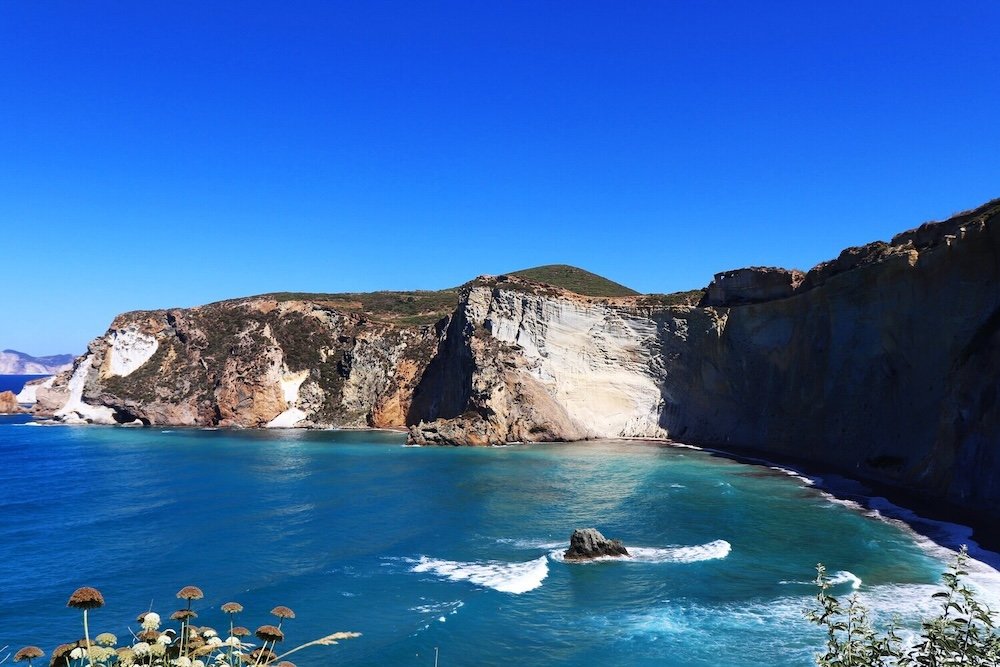
Ponza, the largest island of the Pontine Archipelago, is a hidden gem among the Italian islands that offers a distinctly rustic and less commercialized getaway.
With its charmingly rugged landscape and clear, turquoise waters, Ponza attracts those looking for an authentic Italian island experience away from the bustling tourist spots.
The Rustic Charm of Ponza
Ponza’s appeal lies in its simplicity and natural beauty.
The island’s pastel-colored houses cascade down to the harbor, offering a picturesque setting that seems almost frozen in time. Its serene environment is perfect for those seeking to disconnect and immerse themselves in tranquility.
The island’s geology is fascinating, with volcanic cliffs and grottoes that tell the tale of its ancient volcanic activity.
Boating and Exploration
One of the best ways to appreciate Ponza’s beauty is by boat.
Renting a small boat or joining a guided tour allows visitors to explore the stunning coastline dotted with caves, secluded bays, and natural arches.
The famous natural arches, formed by erosion, stand as natural monuments and are a highlight for many visitors.
These boat trips often include opportunities for snorkeling, where one can dive into the crystal-clear waters to observe the vibrant marine life.
Visiting Natural Arches and Coves
Ponza is also renowned for its natural arches and hidden coves, which provide idyllic spots for swimming and sunbathing.
The island’s rugged coastline features several of these breathtaking formations, with Chiaia di Luna being one of the most stunning beaches, known for its sheer cliff backdrop and golden sands.
The beach is accessible by foot through a tunnel carved out of the rock, adding an element of adventure to the visit.
Embracing Ponza’s Lifestyle
Visitors to Ponza can also enjoy the local cuisine, characterized by fresh seafood and traditional Italian dishes, in the quaint eateries scattered around the island.
The relaxed pace of life here encourages lingering over meals and enjoying the laid-back atmosphere.
Ponza represents the unspoiled beauty of the Italian islands, offering a retreat where nature and simplicity are the primary attractions.
This island is ideal for those looking to experience the quieter side of Italian island life, away from the usual tourist paths.
8. Procida

Procida, acclaimed as the 2022 Capital of Culture, is one of the smallest yet most vibrant Italian islands.
Its charm lies in the bright palette of colors that adorn its marina and the quaint, narrow streets that weave through the town.
This picturesque island is a haven for artists, photographers, and anyone seeking a splash of Mediterranean color and culture.
A Canvas of Colors: Marina and Streets
Procida’s marina is famously depicted in a kaleidoscope of hues—pastel pinks, yellows, blues, and greens paint the facades of the buildings that line the waterfront, reflecting the island’s lively spirit.
This colorful display extends into the island’s streets, where every turn and corner offers a photogenic backdrop that seems straight out of a painting.
The island’s compact size makes it easy to explore on foot, allowing visitors to soak in the vibrant atmosphere at their own pace.
Photography Hotspots
For photography enthusiasts, Procida offers countless opportunities to capture striking images.
Terra Murata, the highest point on the island, offers panoramic views of the colorful town and the surrounding sea, making it a perfect spot for sunset and landscape photography.
The view from the Abbey of San Michele, an architectural marvel in itself, is another not-to-miss perspective that showcases the island in all its glory.
Local Seafood and Culinary Delights
Procida is also renowned for its culinary offerings, especially its seafood.
The local cuisine is a testament to the island’s fishing heritage, with fresh catches featured daily on the menus of small, family-run restaurants.
Dining in Procida is not just about the food; it’s about the experience—eating by the sea, in the bustling marina or on a quiet terrace, enhances the enjoyment of simple, yet flavorful dishes like “Linguine al polpo” (octopus linguine) and “Insalata di mare” (seafood salad).
Experience Procida’s Culture
The cultural vibrancy of Procida is palpable not only in its physical beauty but also in its festivals and daily life, which are deeply intertwined with the sea and its traditions.
Exploring Procida means immersing yourself in a lifestyle where culture, cuisine, and community paint a vivid picture of life on the Italian islands.
9. Lampedusa
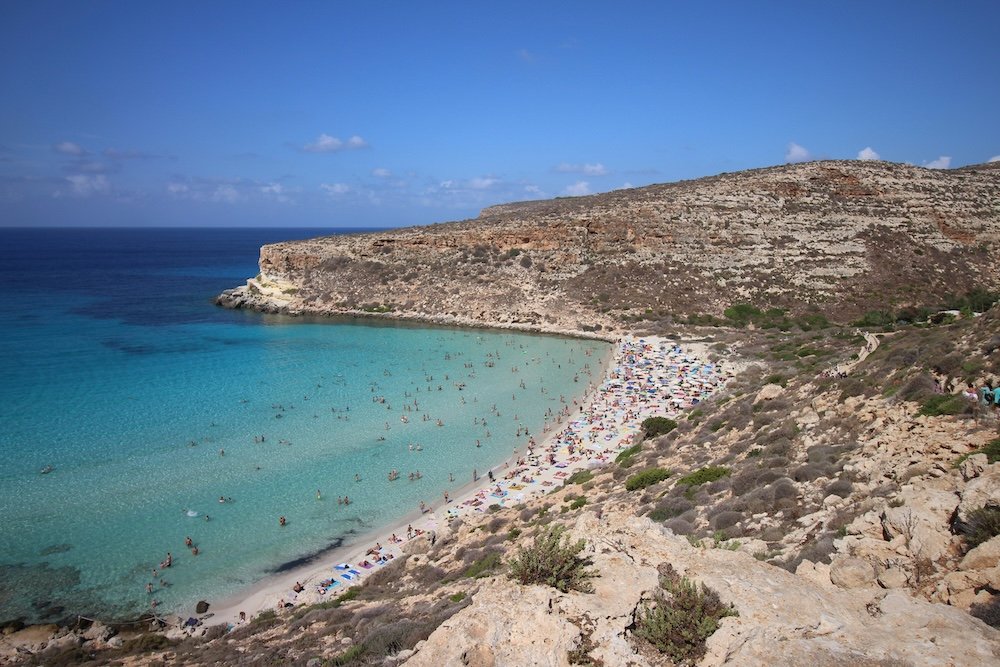
Lampedusa, the southernmost of the Italian islands, is renowned for its spectacular natural beauty and biodiversity, particularly the famous Rabbit Beach, often hailed as one of the world’s best beaches.
This remote island, closer to the African coast than the Italian mainland, offers a tranquil escape with its stunning landscapes and unique wildlife opportunities.
Rabbit Beach: A World-Class Natural Wonder
Rabbit Beach (Spiaggia dei Conigli) is the crown jewel of Lampedusa, celebrated for its soft white sands and crystal-clear turquoise waters.
This beach is not only a paradise for sunbathers and swimmers but also an important nesting site for the endangered loggerhead sea turtles.
The beach’s remote location, accessible only by boat or via a footpath, helps preserve its pristine condition and natural beauty, making it a must-visit for anyone traveling to Lampedusa.
Wildlife Observation Opportunities
Lampedusa offers unique opportunities for wildlife observation, especially of sea turtles.
The island is one of the few places in the Mediterranean where loggerhead sea turtles come ashore to lay their eggs, particularly during the summer months.
The Marine Protected Area, established around Lampedusa, plays a crucial role in the conservation of these majestic creatures and offers guided tours that allow visitors to witness this remarkable natural phenomenon responsibly.
Apart from sea turtles, the island’s surrounding waters are rich in marine life, making it an excellent spot for snorkeling and diving.
Observing the diverse aquatic life in its natural habitat offers an unforgettable experience for nature lovers and marine enthusiasts alike.
Embracing the Natural Beauty of Lampedusa
Lampedusa’s rugged coastline and unspoiled natural landscapes provide the perfect backdrop for those seeking solitude and a deep connection with nature.
The island’s charm extends beyond its beaches; hiking trails and scenic viewpoints offer panoramic views of the Mediterranean, showcasing the raw beauty of the Italian islands.
Visitors to Lampedusa can also enjoy the local cuisine, which is heavily influenced by the sea.
Fresh seafood, caught daily, is a staple in the local diet, and dining here offers a taste of the island’s culinary traditions, deeply intertwined with its cultural and natural heritage.
10. Favignana

Favignana, the largest of the Aegadian Islands in the Mediterranean Sea, is a captivating destination among the Italian islands, known for its crystal-clear waters and rich maritime history.
This island, with its rugged coastline and turquoise bays, offers a perfect blend of natural beauty and historical intrigue.
Ideal Waters for Snorkeling and Diving
The waters around Favignana are exceptionally clear, making it an ideal spot for snorkeling and diving.
The underwater world here is vibrant with life, featuring a variety of marine species and spectacular underwater landscapes.
The presence of numerous accessible coves and calm bays ensures that both beginners and experienced divers can enjoy the underwater offerings.
Popular spots like Cala Rossa and Bue Marino are known for their stunning underwater caves and rich marine biodiversity.
Cycling Around Favignana
Exploring Favignana by bike is one of the best ways to experience the island’s beauty.
The relatively flat terrain and scenic trails make it easy for visitors of all fitness levels to navigate around.
Cycling allows for intimate exploration of the island’s many hidden gems—from secluded beaches and ancient quarries to the charming town center with its rustic architecture.
The island’s size makes it possible to see much of it in a single day, making biking both an efficient and enjoyable way to tour Favignana.
Visiting the Historic Tuna Fishery
A significant part of Favignana’s heritage is its historic tuna fishery, which was once the heart of the island’s economy.
The old tuna fishery, or “Tonnara,” has been converted into a museum that offers insights into the traditional methods of tuna fishing and processing that were used for centuries.
This historic site not only provides a glimpse into the island’s past but also emphasizes the cultural importance of tuna to the local community.
Visitors can learn about the annual tuna catch and the famed “Mattanza” technique, a traditional method of catching tuna that was practiced until the early 21st century.
Embracing the Serenity of Favignana
Favignana offers a tranquil escape where visitors can connect with nature and history while enjoying the leisurely pace of island life.
The combination of its aquatic activities, easy-going exploration options, and cultural insights renders Favignana a quintessential representation of the Italian islands—a place where every visit is both an adventure and a chance to unwind.
Conclusion
The Italian islands offer an extraordinary variety of experiences, each island with its own unique character and charm.
From the historic and volcanic landscapes of Sicily and the pristine beaches of Sardinia to the cultural splendor of Capri and the rustic, unspoiled beauty of Ponza, these islands showcase the rich diversity of Italy’s natural and cultural heritage.
Sicily captivates with its ancient ruins and vibrant local life, while Sardinia boasts some of the Mediterranean’s most stunning beaches and archaeological wonders.
Capri offers a blend of natural beauty and luxury, and Elba invites history enthusiasts to explore its ties to Napoleon’s exile.
Ischia is renowned for its thermal spas, Lipari for its geological and archaeological sites, and Ponza for a quieter, more authentic experience.
Procida charms with its colorful marina and cultural vibrancy, Lampedusa stuns with its world-class beaches and wildlife, and Favignana enchants with its clear waters and peaceful cycling routes.
Each of these islands presents a unique opportunity to explore and enjoy a different facet of Italian life and nature.
Whether you’re an adventurer eager to dive into the clear blue waters, a history buff excited to walk through the layers of time, or a traveler seeking tranquility in picturesque locales, the Italian islands offer it all.

FAQ’s About the Italian Islands:
What is the most beautiful island in Italy?
The title of the most beautiful island in Italy often goes to Capri.
Known for its stunning landscapes, luxurious atmosphere, and attractions like the Blue Grotto, Capri captivates visitors with its blend of natural beauty and chic charm.
What are the 7 islands of Italy?
Italy has many islands, but a notable group often referred to includes the seven main islands of the Tuscan Archipelago: Elba, Giglio, Capraia, Montecristo, Pianosa, Giannutri, and Gorgona.
What are the two main islands off Italy?
The two main islands off Italy are Sicily and Sardinia.
Sicily is the largest Mediterranean island, rich in history and culture, while Sardinia is known for its stunning beaches and ancient archaeological sites.
What are the three main islands in Italy?
The three main islands in Italy are Sicily, Sardinia, and Elba.
Sicily and Sardinia are the two largest, and Elba is famous historically as the site of Napoleon’s exile.
What are the three islands near Italy to visit?
Three popular islands near Italy to visit are Capri, Ischia, and Elba.
Each offers unique attractions, from Capri’s glamorous lifestyle and stunning scenery to Ischia’s thermal spas and Elba’s historical sites.
What is the famous island off the coast of Italy?
Capri is arguably the most famous island off the coast of Italy, known worldwide for its extraordinary beauty and upscale tourist facilities.
What are the 3 big islands off the west coast of Italy called?
The three largest islands off the west coast of Italy are Sicily, Sardinia, and Elba.
What is the most luxury island in Italy?
Capri is considered the most luxurious island in Italy, attracting celebrities and wealthy tourists with its high-end boutiques, exclusive resorts, and beautiful landscapes.
What are the Italian islands off the Amalfi Coast?
The main island near the Amalfi Coast is Capri.
Additionally, the nearby islands of Ischia and Procida in the Bay of Naples are also often associated with the Amalfi Coast due to their proximity and popularity.
Where do the millionaires live in Italy?
Millionaires in Italy are often found in upscale areas like Milan’s fashion district, Rome’s Parioli, and along the Amalfi Coast.
Sardinia’s Costa Smeralda is particularly famous for attracting millionaires and celebrities with its luxurious resorts and exclusive beaches.
What is the prettiest area in Italy?
Italy is full of beautiful areas, but Tuscany, with its rolling hills, vineyards, and historic cities like Florence and Siena, is often considered one of the prettiest.
The Amalfi Coast is also renowned for its dramatic coastline and picturesque towns.
What is the most expensive place to holiday in Italy?
The Costa Smeralda in Sardinia is often cited as the most expensive place to holiday in Italy, known for its luxury hotels, exclusive beaches, and upscale nightlife.
What is the small island off the Amalfi Coast?
Li Galli, a small archipelago also known as the Sirenusas, is located off the Amalfi Coast.
These islands are less famous but are steeped in mythology and offer stunning natural beauty.
What island is off Sicily?
Several islands are off Sicily, but the largest and most well-known is the island of Pantelleria, situated between Sicily and the Tunisian coast.
It’s known for its dramatic volcanic landscapes and caper production.
What is the little island off Italy?
One notable small island off Italy is Stromboli, part of the Aeolian archipelago.
It is famous for its continuously active volcano, which is a popular attraction for tourists.
